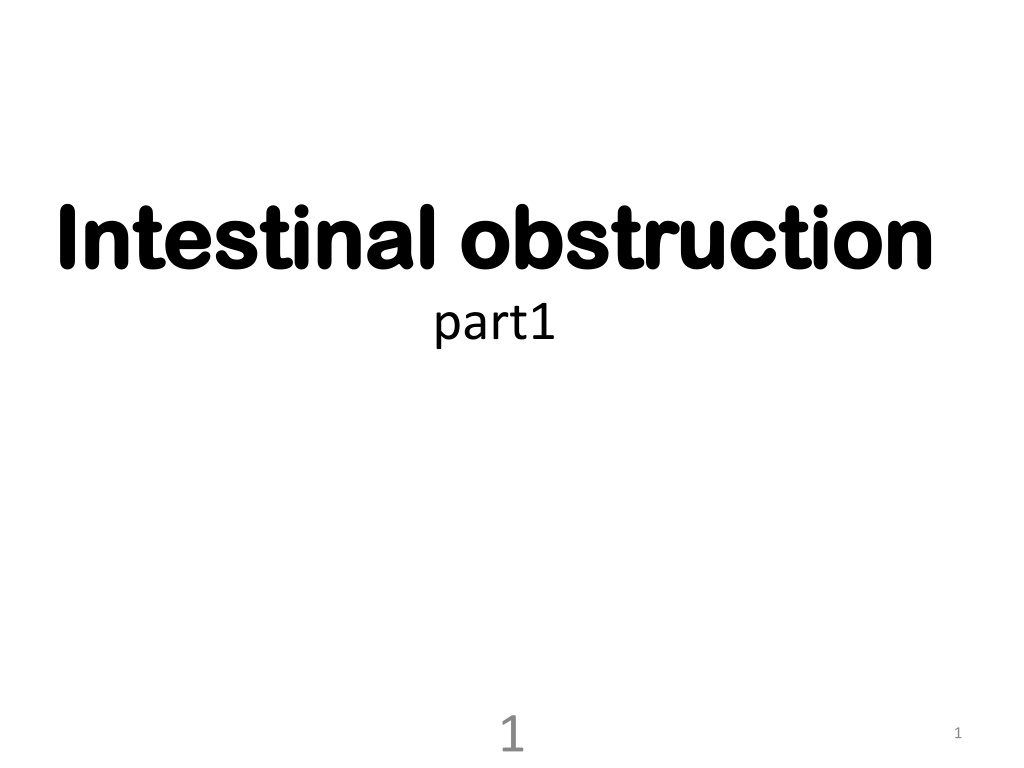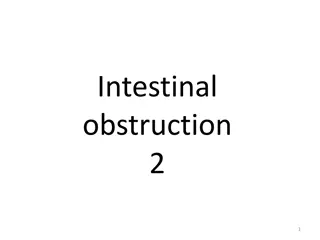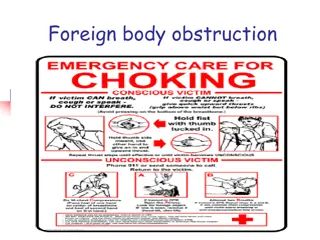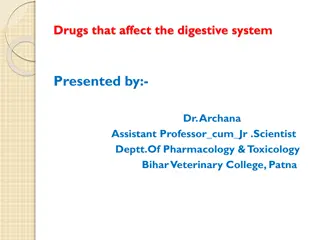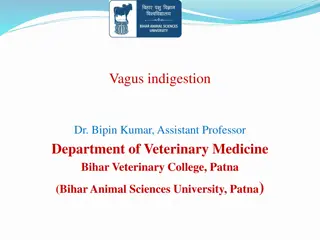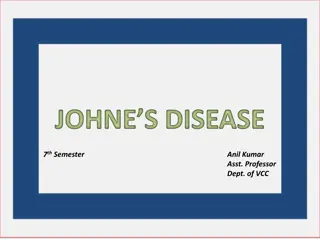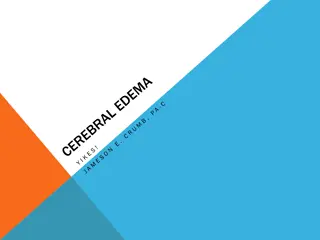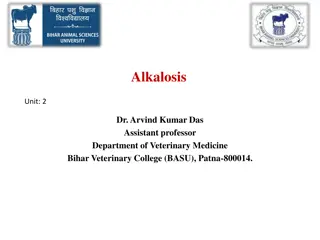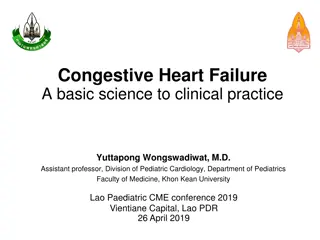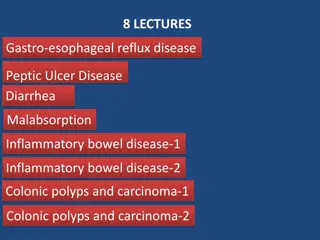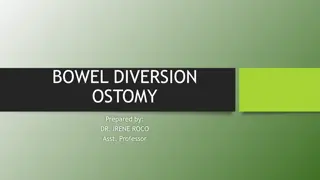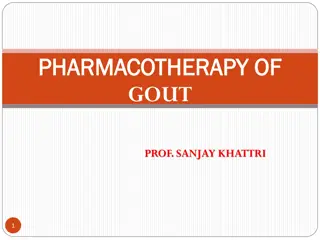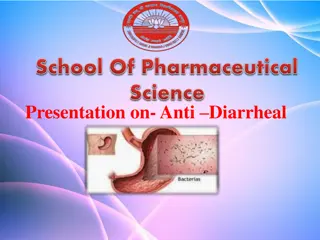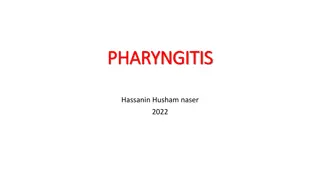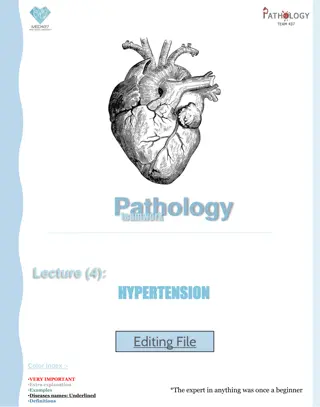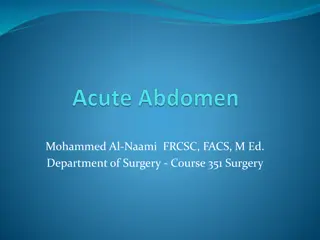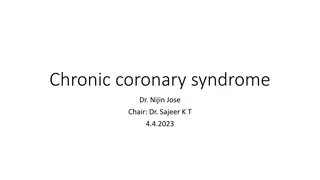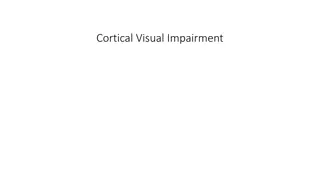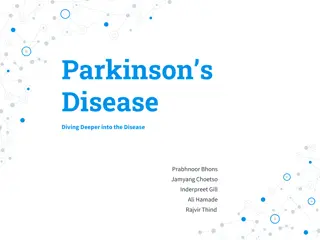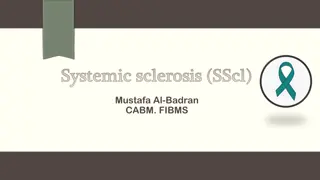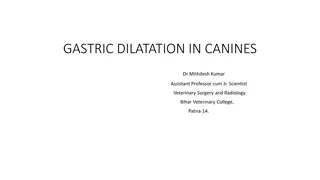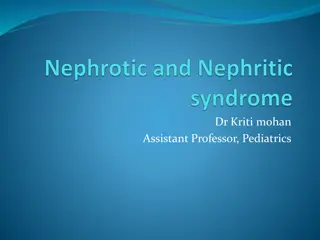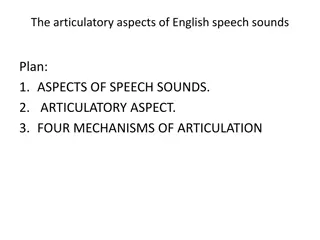Understanding Intestinal Obstruction: Causes, Classification, and Pathophysiology
Intestinal obstruction can be classified into dynamic and adynamic types, with various causes such as intraluminal faecal impaction, malignancy, and hernia. The pathophysiology involves changes in bowel peristalsis and dilation, leading to potential strangulation and ischemia. Morbidity and mortality risks associated with strangulation include sepsis and dehydration.
Download Presentation

Please find below an Image/Link to download the presentation.
The content on the website is provided AS IS for your information and personal use only. It may not be sold, licensed, or shared on other websites without obtaining consent from the author. Download presentation by click this link. If you encounter any issues during the download, it is possible that the publisher has removed the file from their server.
E N D
Presentation Transcript
Intestinal obstruction Intestinal obstruction part1 1 1
CLASSIFICATION Intestinal obstruction may be classified into two types: Dynamic, in which peristalsis is working against a mechanical obstruction. It may occur in an acute or a chronic form. Adynamic, in which there is no mechanical obstruction; peristalsis is absent or inadequate (e.g. paralytic ileus or Pseudo-obstruction). 2 2
Causes of intestinal obstruction Dynamic Intraluminal Faecal impaction Foreign bodies Bezoars Gallstones Intramural Stricture Malignancy Intussusception Volvulus Extramural Bands/adhesions Hernia 3 3
Adynamic Paralytic ileus Pseudo-obstruction Figure.1 Pie chart showing the common causes of intestinal obstruction and their relative frequencies 4
PATHOPHYSIOLOGY Bowel distal to the obstruction: It exhibits normal peristalsis and absorption, then It become empty and collapse Bowel proximal to the obstruction It dilates (distention), caused by GAS and FLUID. Shows increased peristalsis (colicky pain and exaggerated bowel sounds) to OVERCOME the obstruction. Then it become exhausted (paralyzed with negative bowel sound). 5 5
STRANGULATION In strangulation, the blood supply is compromised and the bowel becomes ischaemic. Causes of strangulation Direct pressure on the bowel wall Hernial orifices Adhesions/bands Interrupted mesenteric blood flow Volvulus Intussusception Increased intraluminal pressure Closed-loop obstruction 6
The morbidity and mortality associated with strangulation are largely dependent on the duration of the ischaemia and its extent. Distention of the obstructed segment increase pressure within the bowel wall impaired venous flow increase capillary pressure impaired arterial supply ischemia and transudation ( tenderness) infarction and perforation ( sever constant pain). The systemic effect of strangulation is caused by: Sepsis dehydration 7 7
Closed-loop obstruction This occurs when the bowel is obstructed at both the proximal and distal points, the distension is principally confined to the closed loop; distension proximal to the obstructed segment is not typically marked. Figure.2: Closed-loop obstruction with no proximal (A) or distal (C) distension and impending strangulation (B). 8
The most classical example of Closed-loop obstruction is the presence of a malignant stricture of the colon with a competent ileocaecal valve (present in up to one-third of individuals). The obstruction can occur with the lesion as far distally as the rectum. Figure.3 Carcinomatous stricture (X) of the hepatic flexure: closed-loop obstruction 9
SPECIAL TYPES OF MECHANICAL INTESTINAL OBSTRUCTION Internal hernia It occurs when a portion of the small intestine becomes entrapped in one of the internal openings or fossae inside the abdomen. The following are potential sites of internal herniation (all are rare): the foramen of Winslow; a defect in the mesentery; a defect in the transverse mesocolon; defects in the broad ligament 10 10
Congenital or acquired diaphragmatic hernia; duodenal retroperitoneal fossae left paraduodenal and right duodenojejunal; caecal/appendiceal retroperitoneal fossae superior, inferior and retrocaecal;intersigmoid fossa The standard treatment is by dividing the constricting agent and release the bowel, this should be avoided in: foramen of Winslow Mesenteric defects Paraduodenal/ duodenojejunal fossae As there is major blood vessels in these sites. 11
Obstruction from enteric strictures TB or crohns disease (most common) Lymphomatous malignant stricture ( uncommon) Carcinoma and sarcoma are rare The presentation is usually subacute or chronic. Treatment: Is by resecting the diseased segment and anastomosis, except in crohns disease we should try for strictureplasty. 12
Bolus obstruction Bolus obstruction in the small bowel may be caused by gallstones, food, trichobezoar, phytobezoar, stercoliths and worms. Gallstones Gallstone ileus occur usually in elderly patients when a large stone erode the gallbladder wall into the duodenum, the stone pass down the small bowel and then will be impacted proximal (60 cm) to ileocaecal valve. Clinical features: History of right hypochondrial pain Recent history of central colicky abdominal pain, as the obstruction is partial (ball and valve effect) Radiological features are Rigler s triad: Pneumobilia Stone shadow in right lower abdomen small bowel obstruction 13
14 Figure 3: Rigler s triad
Treatment: By laparotomy the stone is milked proximally, then crush open the bowel (enterotomy) and extract if the stone is faceted, look for other stone don t touch the gallbladder site Food Bolus obstruction may occur after partial or total gastrectomy when unchewed articles can pass directly into the small bowel, treatment is usually by crushing. 15 15
Trychobezoars and phytobezoars These are firm masses of undigested hair ball and fruit/ vegetable fibre respectively. A preoperative diagnosis is difficult even with high-resolution computed tomography (CT) scanning. Surgical treatment is by kneading the lesion into the caecum or otherwise open removal. 16
Stercoliths These are usually found in the small bowel in association with a jejunal diverticulum or ileal stricture. Presentation and management are identical to that of gallstones. Ascaris lumbricoides may cause low small bowel obstruction, particularly in children, the institutionalised and those near the tropics. Diagnosis: Recent intake of antihelminthic drugs Possible vision of the worms Eosinophilia The sight of worms in gas filled small bowels 17 17
Figure 4: Obstruction of the small intestine due to Ascaris lumbricoides 18
Obstruction by adhesions and bands Adhesions Postoperative adhesions and bands are the most common cause of intestinal obstruction. The lifetime risk is 4% The risk of undergoing laparotomy is 2% Pathophysiology: Any source of peritoneal irritation results in local fibrin production, which produces adhesions between apposed surfaces in early stage (fibrinous) it can be reversible 19
TABLE.1 the common causes of intra-abdominal adhesions . Acute inflammation Foreign material Infection Peritonitis, tuberculosis Chronic inflammatory Crohn s disease conditions Radiation enteritis Sites of anastomoses, reperitonealisation of raw areas, trauma, ischaemia Talc, starch, gauze, silk 20 20
Prevention of adhesions Factors that may limit adhesion formation include: Good surgical technique Washing of the peritoneal cavity with saline to remove clots Minimizing contact with gauze Covering anastomosis and raw peritoneal surfaces Numerous substances have been instilled in the peritoneal cavity to prevent adhesion formation such as hyaluronidase, hydrocortisone, silicone, dextran, polyvinylpropylene (PVP), chondroitin and streptomycin, anticoagulants, antihistamines, non-steroidal anti-inflammatory drugs and streptokinase, no single agent or combination of agents has been convincingly shown to be effective. The best possible way is by wide use of laparoscopic surgery 21
Bands Usually only one band is culpable. This may be: congenital e.g. obliterated vitellointestinal duct; a string band following previous bacterial peritonitis; a portion of greater omentum, usually adherent to the parietes. Acute intussusception This occurs when one portion of the gut invaginates into an immediately adjacent segment; almost invariably, it is the proximal into the distal. Most commonly in children, peak age 5-10 months 90% are idiopathic in children. In adult, always there is a pathological lead point such as polyps (e.g. Peutz Jeghers syndrome), a submucosal lipoma or other tumour. 22 22
Pathology An intussusception is composed of three parts the entering or inner tube (intussusceptum); the returning or middle tube; the sheath or outer tube (intussuscipiens). The part that advances is the apex, the mass is the intussusception and the neck is the junction of the entering layer with the mass. 23
Volvulus A volvulus is a twisting or axial rotation of a portion of bowel about its mesentery. The rotation causes obstruction to the lumen (>180 torsion) and if tight enough also causes vascular occlusion in the mesentery (>360 torsion) Volvuli are divided into Primary e.g. volvulus neonatorum, caecal volvulus and sigmoid volvulus (most common). Secondary which is the more common variety, is due to rotation of a segment of bowel around an acquired adhesion or stoma. 26
Sigmoid volvulus This is uncommon in Europe and the USA but more common in Eastern Europe and Africa. It is the most common cause of large bowel obstruction in the indigenous black African population. Rotation nearly always occurs in the anticlockwise direction 27
Other predisposing factors include a high-residue diet and constipation, elderly patients; comorbidities are common and chronic psychotropic drug use is associated with this condition. Presentation can be classified as: Fulminant: sudden onset, severe pain, early vomiting, rapidly deteriorating clinical course; Indolent: insidious onset, slow progressive course, less pain, late vomiting. 28 28
Compound volvulus This is a rare condition also known as ileosigmoid knotting. The long pelvic mesocolon allows the ileum to twist around the sigmoid colon, resulting in gangrene of either or both segments of bowel. 29
CLINICAL FEATURES OF INTESTINAL OBSTRUCTION Dynamic obstruction The diagnosis of dynamic intestinal obstruction is based on the classic quartet of pain, distension, vomiting and absolute constipation. Obstruction may be classified clinically into two types: small bowel obstruction high or low; large bowel obstruction. The nature of the presentation will also be influenced by whether the obstruction is: complete; has all the 4 features Incomplete. also called partial or subacute 30 30
Vomiting Pain Distention constipation high small bowel obstruction, low small bowel obstruction Early and profuse Early, less prominent Minimal late Delayed prominent Central late large bowel obstruction, Delayed, late Mild or moderate peripheral Early 31
The clinical features vary according to: the location of the obstruction; the duration of the obstruction; the underlying pathology; the presence or absence of intestinal ischaemia. Late features of intestinal obstruction: Dehydration Oliguria Hypovolaemic shock Fever Septicaemia respiratory embarrassment peritonism 32 32
Pain The first symptom Sudden sever Colicky Central in small bowel, peripheral in large bowel obstruction Due to increased peristaltic activity Progression: Become mild and more diffuse constant if distention occur. Become more sever constant if strangulation occur. Disappear (no pain) if exhaustion and ileus occur. 33
Vomiting Vomiting delayed as the obstruction is far distal. As obstruction progress (time) the vomiting change into faeculent material due to bacterial overgrowth 34
Distension In small bowel (SB) it depend on the site: Minimum in proximal SB Could be extensive in distal SB It s a late feature of LB obstruction Constipation Absolute : neither feces nor flatus Partial only passage of flatus, occur in partial obstruction Passage of flatus and feces could occur in complete obstruction by the content distal to the obstruction. There are 5 cases in which intestinal obstruction will not present with absolute constipation and even may present with diarrhea: 35
Richters hernia; gallstone ileus; mesenteric vascular occlusion; functional obstruction associated with pelvic abscess; all cases of partial obstruction (in which diarrhoea may occur). 36
Other manifestations Dehydration Seen most commonly in SB obstruction Presented by dry mouth, sunken eye, etc Hypokalaemia Uncommon in simple mechanical obstruction Hyperkalaemia occur after strangulation 37
Pyrexia Pyrexia in the presence of obstruction is rare and may indicate: the onset of ischaemia; intestinal perforation; inflammation or abscess associated with the obstructing diseasae. Hypothermia indicates septicaemic shock or neglected cases of long duration. 38
Abdominal tenderness Localized tenderness by the exudates of ischemic fluid indicate impending or already established ischemia. Peritonitis indicate overt infarction and/or perforation. Bowel sounds Mentioned earlier 39
Thank you 40
